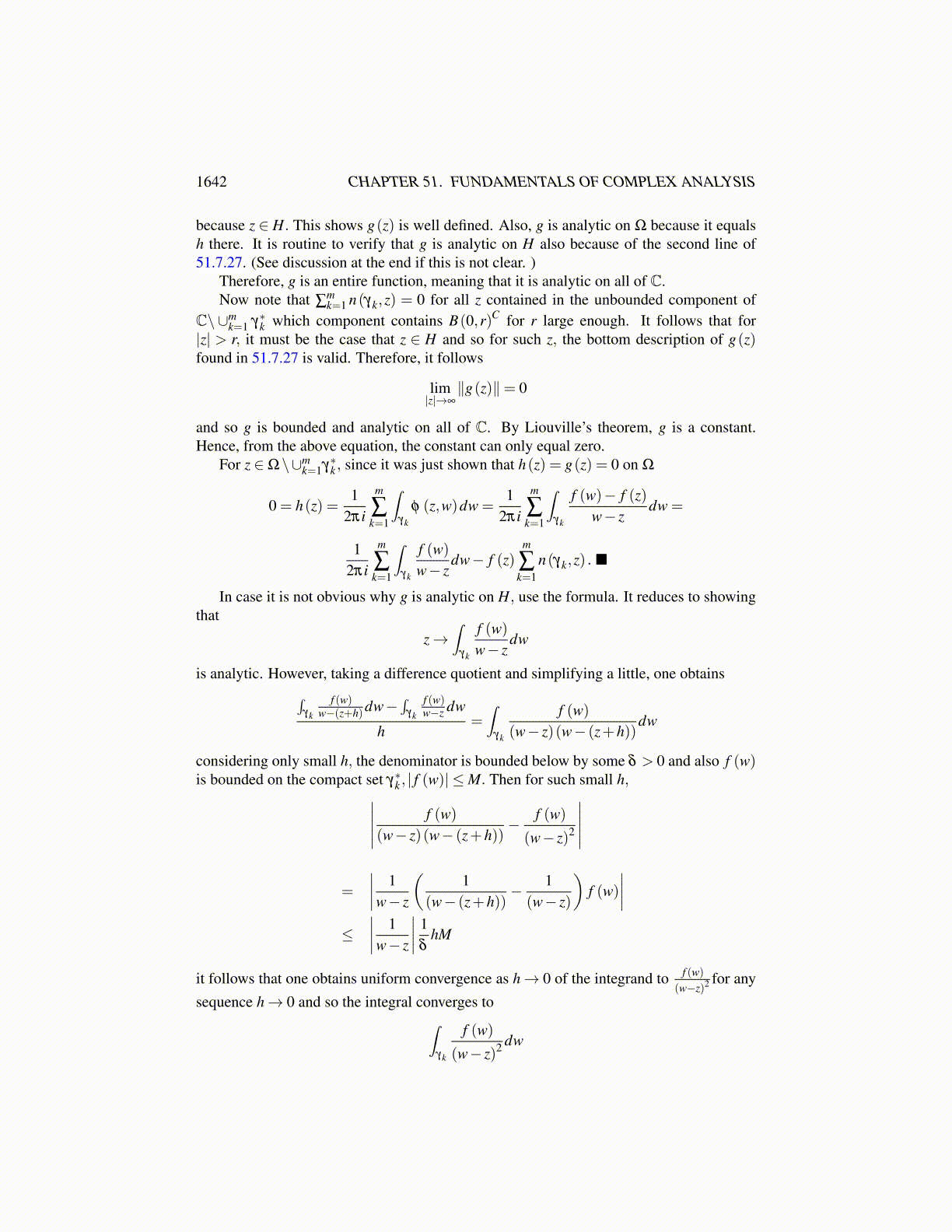
1642 CHAPTER 51. FUNDAMENTALS OF COMPLEX ANALYSIS
γ1γ2
γ3
Ω
The following theorem is the general Cauchy integral formula.
Definition 51.7.18 Let {γk}nk=1 be continuous oriented curves having bounded variation.
Then this is called a cycle if whenever, z /∈ ∪nk=1γ∗k , ∑
nk=1 n(γk,z) is an integer.
By Theorem 51.7.15 if each γk is a closed curve, then {γk}nk=1 is a cycle.
Theorem 51.7.19 Let Ω be an open subset of the plane and let f : Ω→ X be analytic. Ifγk : [ak,bk]→ Ω, k = 1, · · · ,m are continuous curves having bounded variation such thatfor all z /∈ ∪m
k=1γk ([ak,bk])
m
∑k=1
n(γk,z) equals an integer
and for all z /∈Ω,m
∑k=1
n(γk,z) = 0.
Then for all z ∈Ω\∪mk=1γk ([ak,bk]) ,
f (z)m
∑k=1
n(γk,z) =m
∑k=1
12πi
∫γk
f (w)w− z
dw.
Proof: Let φ be defined on Ω×Ω by
φ (z,w)≡{ f (w)− f (z)
w−z if w ̸= zf ′ (z) if w = z
.
Then φ is analytic as a function of both z and w and is continuous in Ω×Ω. Here is why: Itis clear that d
dw φ (z, ·)(w) exists if w ̸= z. It remains to consider whether ddz φ (·,z)(z) exists.
One needs to consider
φ (z+h,z)−φ (z,z)h
=f (z+h)− f (z)
h − f ′ (z)h
We can write f (z+h) as a power series in h whenever h is suitably small.
f (z+h)− f (z)h − f ′ (z)
h=